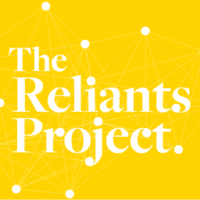When it comes to relating to each other, we live in a time of great paradox.
In some ways, the forces of globalisation and technological progress have made it easier than ever to connect to people from all over the world and find like-minded individuals who share our passions and interests.
But in other ways, the changing structure of our society and the increasingly fluid ways in which we live and communicate have made it harder than ever to build meaningful relationships and maintain existing ones.
Now, the coronavirus crisis of 2020 has shone a light on the state of our social fabric. Many have been separated from their family and friends and we are continuing to adapt to a new world of social distancing which has isolated us within our own households.
But the pandemic has also presented us with an opportunity to reflect on how we relate to others in our lives, cultivate our relationships and invest in the capital that matters most—social capital.
Bowling Alone: The Importance of Social Capital
One of the first books got me interested in the power of networks and the impact they have on our lives was Robert Putnam’s Bowling Alone.
In the book, Putnam drew on evidence including almost half a million interviews conducted over a 25 year period in America to show the extent of social degradation present in modern communities.
He found that the forces of urbanisation and industrialisation were fraying the ties between friends and relatives so much that in 2001 when the book was published Americans were 35% less likely to visit their neighbours or have dinner with their families than in the thirty years before that.
One of the most concrete examples of this was the transformation in the way Americans were playing 10-pin bowling, moving away from competing against each other in local leagues to literally ‘bowling alone’. This, Putnam argued, was evidence of a weakening of community networks and a loss of social capital.
The same root causes and symptoms can also be found in other modern, urbanised societies outside the US, where social capital has gradually been eroded over time. One can only imagine what the figures around visiting neighbours and families would now be after two decades that have seen an acceleration in the forces Putnam described, along with the advent of new technologies like social media.
Social Capital and Dealing with Disasters
The ideas behind the concept of social capital have been around for thousands of years, dating back to ancient civilisations but the term itself has only gained popular attention in recent years, thanks in part to Putnam’s work and the rise of network science.
The OECD defines social capital as “networks together with shared norms, values and understandings that facilitate co-operation within or among groups”. But why does this concept matter so much and why is it gaining traction now?
Other than being a critical component of living a happy and healthy life as found by the Harvard Longitudinal Study, there’s an emerging body of research that emphasises the importance of social capital for disaster management in the face of extreme weather events, national security emergencies and pandemics like the one we’re facing.
In these situations, social capital can be the difference between life and death. In his book Heat Wave: A Social Autopsy of Disaster in Chicago, author Eric Klinenberg examined the social implications of the 1995 heat wave in Chicago, finding that different ethnic groups had higher mortality rates, based largely on the amount of social capital built up in their communities.
What he found was fascinating:
– Men were more than twice as likely to die as women
– The black/white mortality ratio was 1.5 to 1
– Latinos who made up 25% of the population accounted for 2% of deaths
Klinenberg argued that all of these statistics could effectively be explained by differences in social capital. The gender difference, which authorities expected to be the reverse, could be explained by the social relationships that elderly women retain but elderly men often lose.
When it came to racial differences, Latino family values were cited as a clear differentiator but Klinenburg also went a level deeper, highlighting the structure of neighbourhoods in which the different groups lived as directly influencing the amount of social capital in them. This highlights the need to address these complex issues with the types of analyses needed to truly solve them. Everything else is surface level.
Social Capital in the Time of COVID-19
It’s not difficult to draw parallels between the Coronavirus crisis of 2020 and the Chicago heat wave of 1995. The US and UK have already seen a disproportionate number of people from ethnic minorities dying from COVID-19 and it’s hard to avoid the explanation that social capital has something to do with all this.
We’re living in urban environments where some are so affected by the culture of fear that they feel unable to trust their neighbours or even leave their houses at certain times. We have a rapidly increasing population of single-person households and of seniors living in isolation, with some neighbourhoods completely abandoned by businesses and service providers. Perhaps none of these factors will be directly attributed to the rising toll of COVID-19 fatalities but they have certainly played their part.
As we emerge from lockdown, we’re going to need every last pound of social capital we can muster. In a piece for The New Yorker, Atul Gawande outlined what he felt were the key ingredients to successfully emerge from lockdown, citing culture as the critical final component needed to combat the virus.
Culture is the sum of a community’s behaviours, which spread through our network of relationships. In How Behavior Spreads, Damon Centola shows how complex behavior changes (e.g. wearing masks, maintaining social distance) require multiple instances of social reinforcement from our network in order for them to stick and spread. Our willingness to adhere to these behaviors depends on how much we value the golden rule and on the amount of social capital in our communities.
Social capital is what enables resilience and there’s never been a more important time to invest in it. It’s what will enable us to successfully emerge from lockdown into a new world. It’s what will help us to mend the cracks that the crisis has once again uncovered in our communities. And it’s what will allow us to dream of a future where we can live in a more cooperative and connected way.

